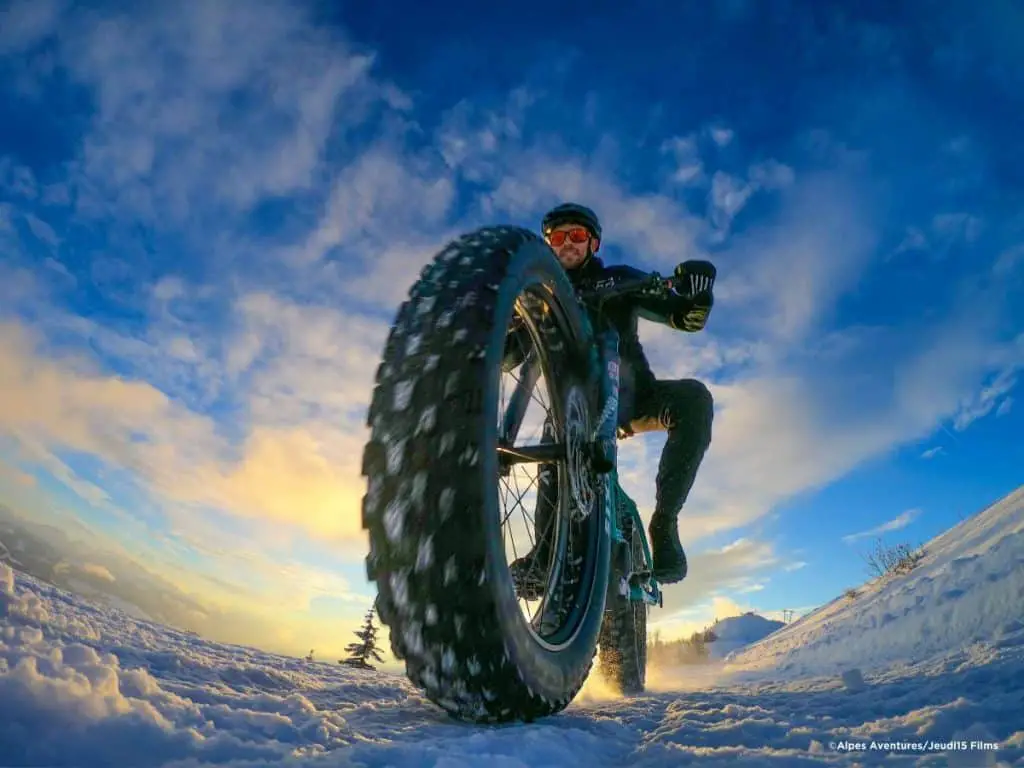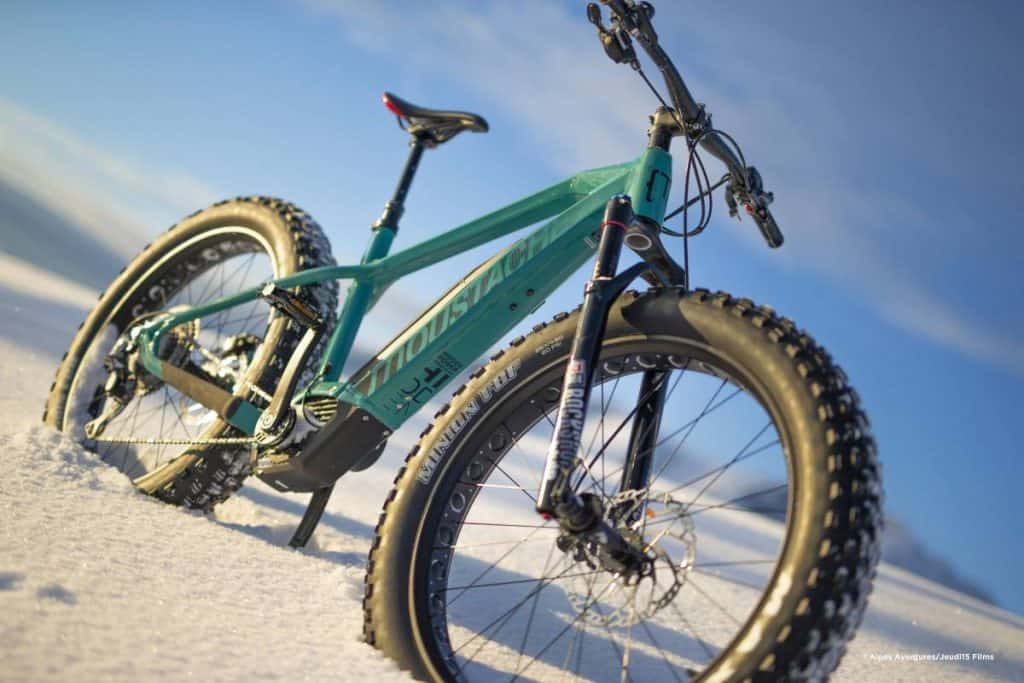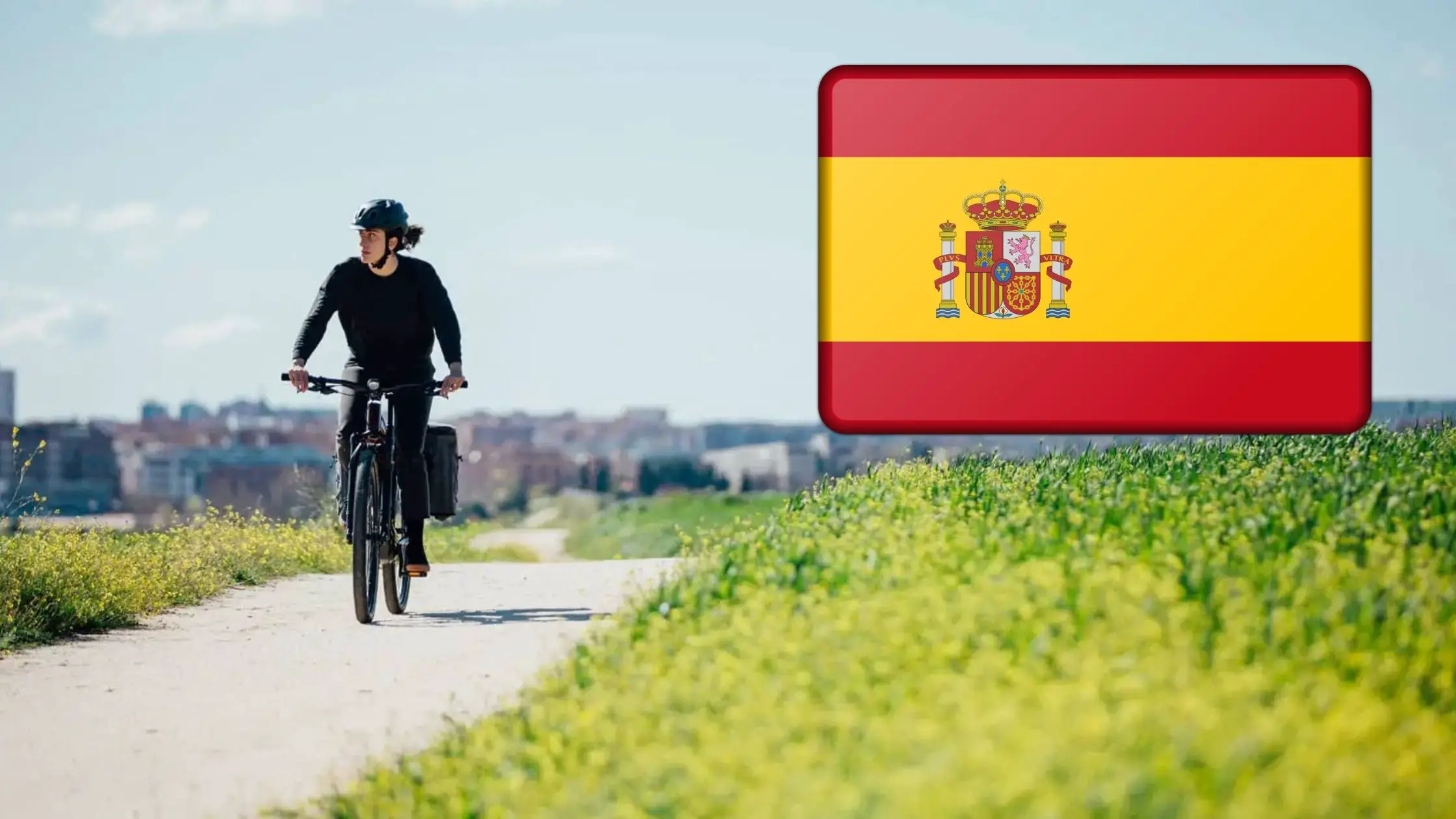Last Updated on January 9, 2023 by Igor Karni

Mountain electric bikes perch on the apex of the e-bike hierarchy, and more than a handful of e-bike enthusiasts will probably be quick to agree. Abounding in power with tough-as-nails durability, it will not take long for you to see just why eMTBs do well to represent the electric bike industry.
For plenty of e-bikers, eMTBs are the rule of thumb, simply because a significant bulk of them are regular riders of their locale’s respective trail systems. And ever since the biking (and hiking) community has begun to warm up to electric mountain bikes, its popularity. You’re probably one of the many “converts” yourself, considering your interest in buying your first mountain e-bike. We wish to shake your hand for acknowledging that eMTBs aren’t bikes for “cheats”.
If not and just find the appeal of an electric mountain bike irresistible, then you have come to the right place. It’s good that you’re taking the time to research how to select the best. This guide will do just that for you and provide detailed information to help you pinpoint what makes an eMTB stand out from others and what is most suitable to you.
The top mountain e-bike criteria you should remember
Since eMTBs are all about performance (and assuming that is why are opting for this type of e-bike in the first place), you have to be more mindful of how much beating the bike can take, the amount of riding range you need (for plenty of mountains electric bike users, the more, the merrier is often the case), how the motor functions and its type, right frame size, safety, and, last but not least, pricing and warranty.
If you’re not already aware of it, most eMTBs can be obscenely expensive (the Specialized Turbo Levo once sold for $18,000, in fact).
Read also: Why are e-bikes so expensive? And, What is the difference between cheap and expensive e-bikes? And, Will e-bikes become cheaper?
This is why you need to be especially mindful of money as a criterion. If you don’t know what you need to look for, you might just end up with a bike that’s just all flash and sizzle (at least, in the way it falls short once you commit it to the trail). The most recommended route to take is to spend more on eMTB features that bring solid durability and reliability.

Besides these criteria, we will also be expounding on a couple of aspects that are undoubtedly more important in this specific type of e-bike, namely:
- Choosing whether you should choose a hardtail or full suspension
- The importance of the travel (mm) parameter in eMTBs
- Why you should not overlook the material used on the frame
- The best motor brands in eMTBs and why they are considered as such
Knowing how these criteria affect the performance and value of an e-bike will obviously help you arrive at a more informed decision in no time. Earning this knowledge now will also go a long way for you as you become more familiar with e-bike technology, which as of this writing, is still rapidly evolving.
That said, this guide will never be complete without including a few recommendations as well. Look no further than the list we have prepared below. We hope that they will also serve as good complimentary references to the information we have shared here.
A few of the best mountain e-bikes at present
| Model Name | Price | Riding Range | Weight |
| Orbea WILD FS M-LTD | $9,499 | 30 – 160 miles (50 – 250 km) | 49.6 pounds (22.5 kg) |
| Specialized Turbo Levo SL Expert Carbon | $9,025 | 30 – 70 miles (50 – 110 km) | 38.8 pounds (17.6 kg) |
| Bulls COPPERHEAD EVO AM 3 | $5,899 | 40 – 100 miles (65 – 160 km) | 56.5 pounds (25.6 kg) |
| Bulls TWENTY9 EVO 1 | $3,899 | 30 – 85 miles (50 – 135 km) | 53.8 pounds (24.4 kg) |
| Surface 604 Shred | $2,090 | 20 – 45 miles (30 – 70 km) | 57.3 pounds (26 kg) |
Know your mountain e-bike type
There are three design categories that most eMTBs fall into. Knowing them could prove to simplify how you view mountain e-bikes, which can help you decide easily in turn. These design disciplines are:
- Trail – The most versatile of the three, trail e-bikes are built with adaptability to most terrains in mind. You want something that is more pro-oriented and won’t have much difficulty tackling technical terrain? This is your best bet.
- Enduro – Enduro variants often shed weight as much as possible to make them more competitive when used for racing. Their frames are noticeably stiffer as well, which makes these bikes generally faster.
- Downhill – These are more beefed up in terms of durability and, as the name implies, more attuned to tackling downhill riding. Their manufacturers do not pay much heed to weight.
As you can see, there are subtle differences in every electric mountain bike, so much so that they already have subcategories. We haven’t even touched on bikes that incorporate a hardtail or full-suspension design yet, which we will discuss later on.
Read also: How far can e-bikes go? What is e-bike range on a single charge? And, How fast are e-bikes?
Toughen up on durability
It’s better to adopt the thinking a sturdier and tougher mountain e-bike will always trump the rest. After all, you most probably won’t be buying an eMTB in the first place if you hadn’t intended to ride it on technical trails (or for racing, even). Sturdiness and the ability to shrug off potential damage from rougher riding and terrain define eMTB durability.
For this, you will have to pay attention to factors like:
- Frame Material – Nowadays, plenty of the best mountain e-bikes use a carbon fiber frame mainly because it is lightweight and can be designed to improve riding experience. Contrary to the notion that it’s fragile, did you know that it’s actually five times tougher than steel?
- With a thicker carbon fiber frame, manufacturers have been able to keep durability high without sacrificing weight. Specialized, in particular, are fans of carbon fiber for good reason. Another noteworthy material is aluminum alloy because it can be more durable than steel but still manages to keep weight down.
- Tire Casings and Protection – You want these to be a bit on the thick side as much as possible simply because of the performance-based nature of eMTBs in general. Thicker casings just give that much-needed additional layer of protection, after all. Take note that these do tend to add to the weight. Of course, you can’t also go wrong with puncture-resistant varieties.
- Suspension – Fork and rear suspensions are often added to boost comfort when riding. However, they also play a crucial role in absorbing bump impacts. Bikes with rear suspension readily achieve that, allowing you to have a comparatively comfy ride all throughout.

Keep riding range from the battery within your needs
We can’t recommend an average riding range you should aim for precisely because this e-bike factor will always be up to you – your riding habits and behavior, in particular. Are you the type who does not mind continuing a ride long after the battery has been drained? Then you obviously do not have to pay too much mind to the range.
Oftentimes, those who should are the ones who tend to use motor assist more often (hence, underlining the direct, non-severable connection between an e-bike’s motor and battery).
Read also: What are the differences between e-bike batteries? And, How to properly store an electric bike?
There are also just too many other factors that affect range (e.g. terrain, biker’s weight, tires, etc.) so it simply would not be appropriate to settle for a specific number. That being said, it’s also not recommended to just go for as much range as you can get.
Admittedly, that means you get to enjoy more motor assistance by going that route, assuming you like to use motor assist most of the time when riding your e-bike. But, that’s pretty much where all of it hinges: on how you ride your e-bike and the amount of time you usually spend riding.
In fact, it can be argued that it’s better to pay more attention to how the battery is integrated. More compact batteries tend to adhere better to traditional mountain-bike geometry, after all, which definitely impacts its overall performance.
Not all brands use such batteries in their models, so it’s certainly worth checking out those that do (Shimano-motored e-bikes are worth mentioning when it comes to having e-bikes with smaller batteries).

Mid-drive motors dominate in superior eMTB models – here’s why
In the past, the usual conversation when it came to the motor is whether you should go for hub or mid-drive. Hub motors, while still present in certain models, have since been far overtaken by mid-mounted motors by virtue of the latter’s sheer plethora of advantages. This is especially true in electric mountain bikes because hub motors have been found to be particularly prone to overheating when ridden extensively on rough, steep terrain.
You will also find Class 1 motors aplenty in top-tier mountain e-bikes (source). Class 1 motors, while limited to the standard 20mph top speeds you see in most e-bikes, are able to extend range because they only provide power with every pedaling action you make (which earns these motors the Pedal Assist label).
Read also: Front, mid-drive, or rear e-bike motor. Which one to choose? And, What is the difference between e-bike motors?
Obviously, companies want to attract e-bikers as much as possible with longer riding ranges, so don’t be surprised if they integrate these motors as much as possible. The Pedal Assist feature just saves more battery life in the long run because of how it works.
Ordinarily, what you do have to be more mindful of is how powerful the motor is in terms of peak watt output. It’s not rare for even the costliest mountain e-bikes to settle for 250W (or even less) motors, which might make it harder for such bikes to conquer hilly spots. This is why you’ll also see brands give their models a maximum output of at least 500W. Brands of motors also come into play in this topic
Which brands stand out when it comes to eMTB motor quality?
Certain motor brands stand out in eMTBs because they bring each of their own distinctive perks to the table. Here’s a list of the motors you should readily attach quality to, as proven by how they design their motors.
- Bosch – Once you start going over eMTB motors, it will be a miracle for you to not encounter the term ‘Bosch Performance Line’ motors. Bosch motors are preferred for their solid support when conquering steep inclines and even when powering through fire trails. Bosch Performance motors, in particular, deserve this commendation.
- The brand also leads in the mid-drive motor department, easily standing out with the variations in power modes that the rider can easily switch to while riding. It won’t be hyperbole to state that this brand has got your back all the way. Here is a link to – Bosch line of e-bike motors.
- Shimano – This brand often prioritizes compactness so they opt to manufacture smaller motors in general to decrease the e-bike’s center of gravity (which is vital to giving it that authentic mountain bike feel). This translates to lesser overall weight, too. This is why if you prefer to possess a more true-to-convention mountain e-bike, then Shimano-powered electric bikes should be at the top of your list.
- The downside of these motors is that they often pale in comparison to Bosch motors in power, often exhibiting starkly lower torque. You might like them more if your mountain e-bike riding style involves less frequent motor assist activations. Here is a link to – Shimano line of e-bike motors.
- Yamaha – Plenty of recent Yamaha motor releases incorporate as much tech as possible. Would you like to track your motor’s stats via bluetooth while riding? Yamaha is a pioneer of such e-bike technology. Tech rules this brand so if you are more of a techy feature-reliant rider then this is a great candidate for you.
- The brand is no pushover in offering multiple support options in their motors, too. A trend among their recent releases also shows that they are starting to include more torque and modes that provide extra motor supports in their creations. Here is a link to – Yamaha line of e-bike motors.
Some well-established e-bike brands, like Specialized, do design and manufacture their own original motors, though. With this considered, you should certainly look at how they perform (and fulfill your requirements) rather than solely using the brand as a gauge for quality.
Read also: Is Specialized a good e-bike brand to buy? Brand and models review.
Should you choose a hardtail or full-suspension?
What makes mountain e-bikes very versatile is that, like their non-motorized counterparts, they also come in hardtail and full-suspension varieties. That said, which one should you be choosing and what factor should affect your decision? Well, when determining this, you have to already have a clear-cut inkling of the trails that you will be regularly riding your eMTB on.
Hardtail mountain e-bikes are your more “moderate” forms of mountain e-bikes because they are often just suited for smoother terrains (e.g. fire roads and less rugged roads). They only incorporate a suspension fork and lack the rear shock that full-suspension eMTBs have. How much of a difference does this make? Plenty in terms of compatibility with trails and pricing.
Read also: Is Haibike a good e-bike brand to buy? Brand and models review.
A full-suspension, in short, provides mountain e-bikes with the famous versatility in tackling terrain that they are known for. There’s also no denying the fact that they feel more comfortable because their designs allow them to mitigate the discomfort the rider usually feels when going through bumpy terrain.
If you are fairly satisfied with an eMTB that you can ride through terrains that aren’t too technical, then you’ll probably be better off with a hardtail. Those short on a budget often settle for hardtails because going full-suspensions often always means having to pay a few thousand dollars more.
Take eMTB travel into account
You will notice that eMTBs have various amounts of travel (indicated in mm). Most full-suspension electric mountain bikes have a travel range of 100mm to 200mm. What does this mean? Well, the rule of thumb is 100mm varieties are often able to accelerate faster, making them more amenable to be ridden on trails that aren’t too bumpy – in short, the smoother the roads, the better.
Read also: Is Moustache a good e-bike brand to buy? Brand and models review.
200mm mountain e-bikes serve as the exact opposite of their 100mm counterparts. These bikes perform spectacularly on rougher roads but tend to have a relatively slower rate of acceleration. Anything in between (i.e.120mm, 150mm, etc.) simply indicates decreases and increases the bike’s ability to handle terrain and acceleration capabilities.
That said, you can also use travel as a ready gauge of what types of roads and trails that any given electric mountain bike is best suited on.

Make sure your e-mountain bike’s frame fits your size and height
Riding experience is an umbrella term that encompasses numerous other important considerations such as comfort, bike performance, fatigue, and stability. And there could not be a factor more crucial to look at for this than frame size. Once you are married to an e-bike with a frame size that suits you perfectly, you enjoy better handling and overall riding experience. That goes a long way in upping your satisfaction with the model you bought.
How do you ensure the frame is suitable for your size and height? Well, one efficient and simple way to do this is to get the stack and reach measurements.
Read also: How to select the right electric bicycle size? And, Which electric bicycle to buy? Making your educated e-bike selection choice.
Reach refers to the horizontal distance between the upper portion of the head tube and the bottom bracket. Stack, on the other hand, connotes the vertical distance of the said points. As long as these two are measured accurately, you will almost always end up with an electric mountain bike that suits you.
Getting the right fit shouldn’t be much of a problem in most brands that offer rider size recommendations. They often get it right from the get-go, after all. Still, you have to make sure not to miss this step.
Oftentimes, more expensive doesn’t really mean better
A lot of beginner e-bike riders tend to fall for the money trap when buying their first mountain e-bikes – the money trap being the costlier, the better. This is unfortunate because most people tend to shell out thousands of dollars for new models only to find out later on that their models now sell for half or less than what they paid for. This is why it’s absurd advice to say that it’s safer to recommend high-end models.
Read also: How to select the best e-bike for your needs? Making your educated e-bike selection choice – and also in this article. And, How much does a good e-bike cost? Comprehensive e-bike pricing guide (with 46 examples).
As long as you know what you need and how each e-bike’s components will be able to help you achieve it, you can easily cast aside that way of thinking. This underscores the need to inform yourself with adequate information about how each eMTB component functions and how they contribute to improving more important factors that affect the riding experience.
You will only end up with an overkill mountain e-bike otherwise, or worse, still get a model that you will be disappointed in long after it has depleted your wallet.
Sure, it’s always a doozy to get at least a two-year warranty for your e-bike. But it won’t matter if you just overpay for a model that underperforms, at least, when giving what you expected it to give.
Inform yourself. That’s the key. You’re already doing yourself a favor by reading and keeping this entire guide in mind.
A few words in conclusion
While it’s still important to look at fundamental factors like battery and motor when picking an eMTB (they, more or less, dictate its price after all), you should not make them the end-all-be-all of your decision. Instead, try to lean more towards how the bike will fulfill your needs and ensure a satisfactory riding experience.
This pretty much sums up how you can make the most out of your money when purchasing these, more often than not, expensive electric bikes.
Read also: Ever considered offering e-bike as a gift? Or gifting one to yourself? Check out our suggestions – in this e-bike gift guide.
Igor is a sustainable mobility and green energy advocate. His mission for Easy E-biking is to help make electric cycling simple, practical, and fun. Follow him on Facebook and LinkedIn.




